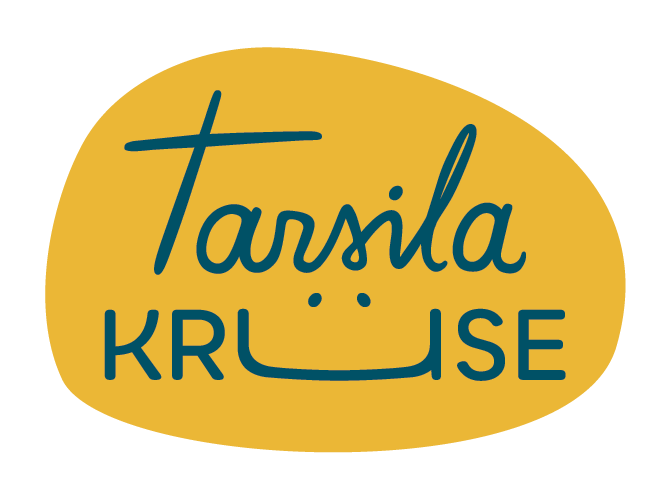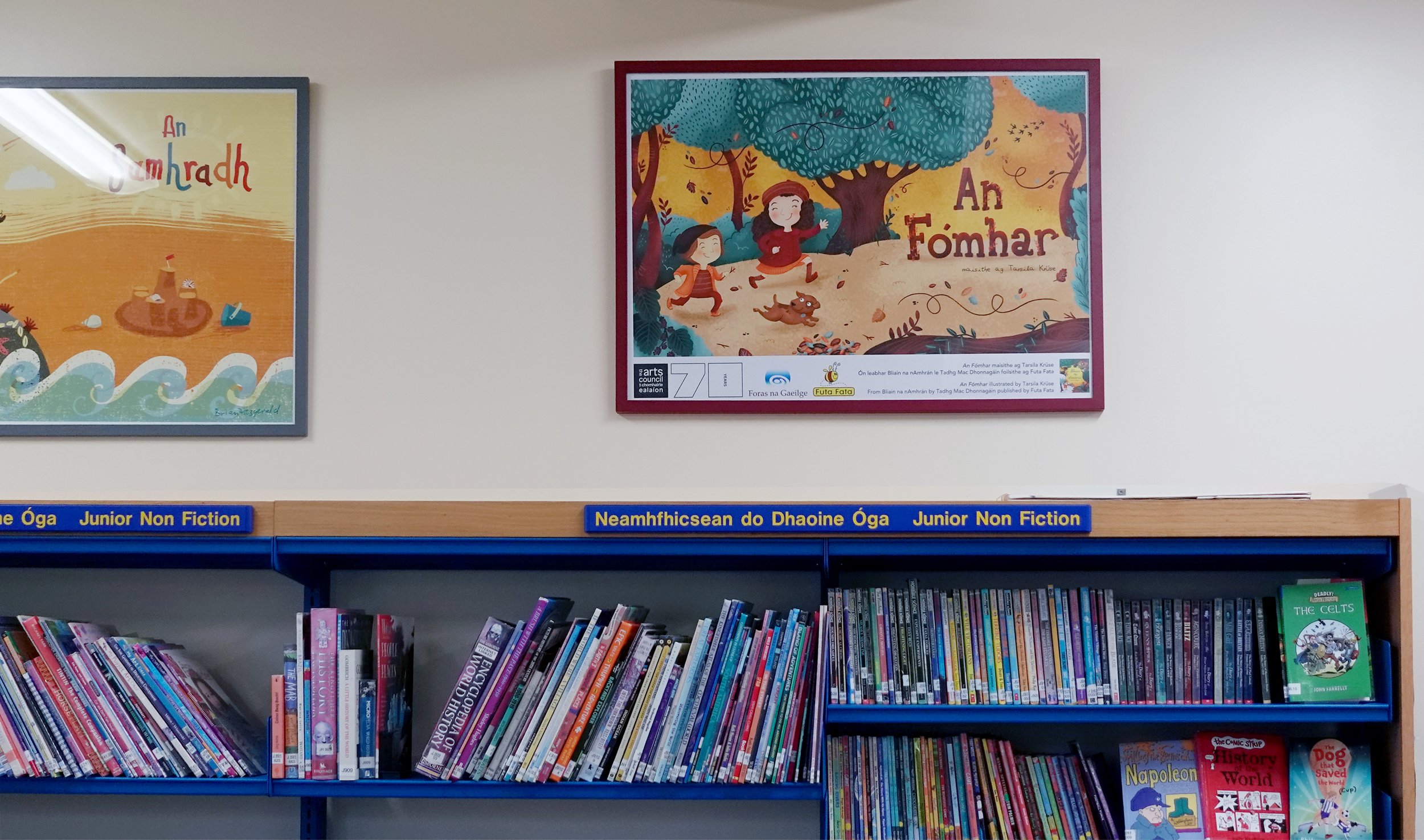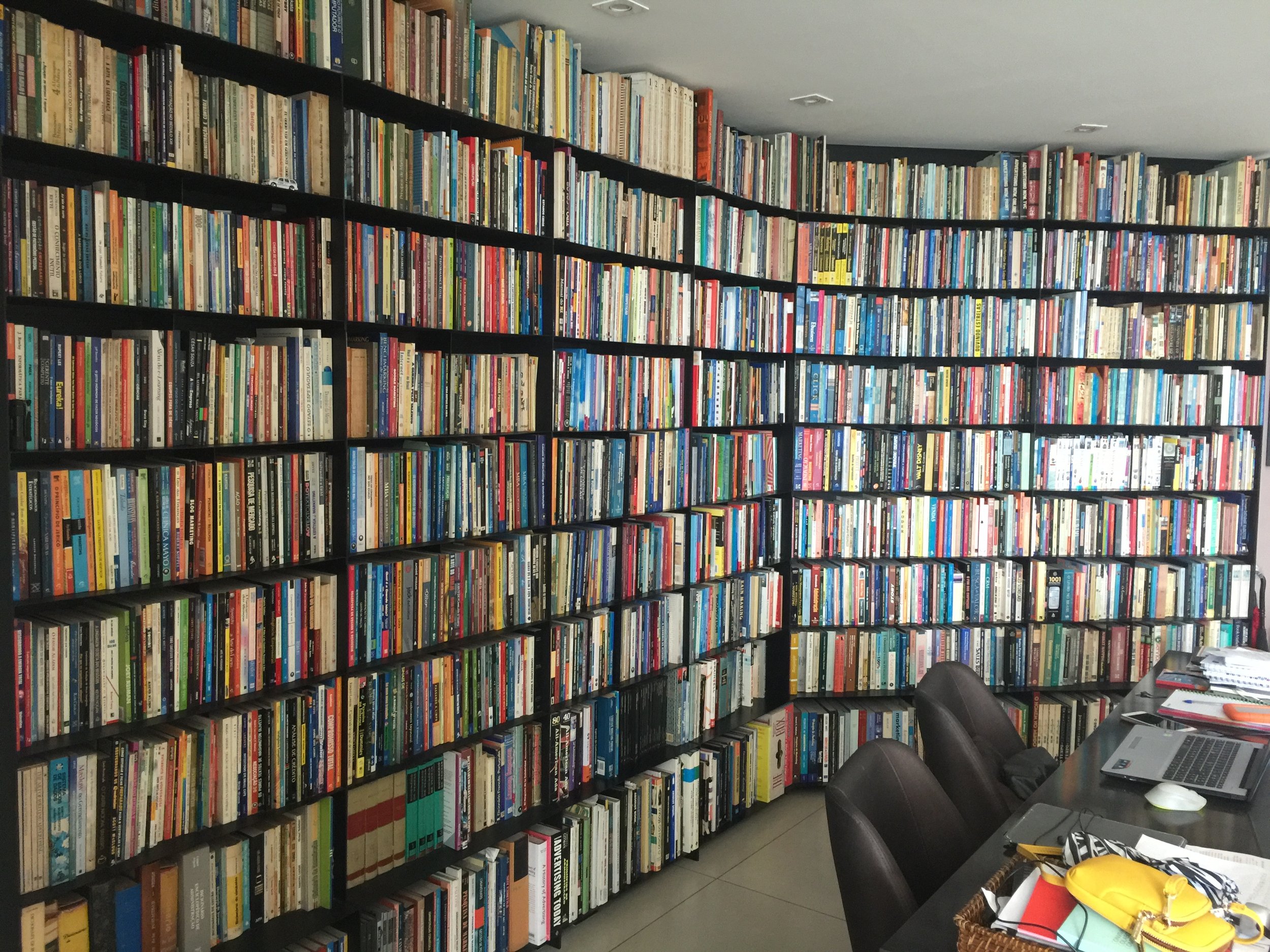Working with the Irish language is always a privilege, and it is even more rewarding when your work exceeds expectations and reaches a broader audience. This was the case when I was contacted by the lovely Antoinette Robinson when she wanted to make the Children’s Section at Roscommon Library more joyful, cosy and inviting for young readers.
Brian Fitzgerald and Tarsila Krüse at the launch of Bliain na nAmhrán. Photography by © Seán Ó Mainnín
Antoinette proposed to feature artworks from different children’s book illustrators throughout the children’s section in posters to entice the imagination and enchant visitors. I knew this was a project I wanted to be involved with because that is precisely what I aim to do with my work.
Framed poster of An Fómhar by Tarsila Krüse. Photograph by Antoinette Robinson.
The images chosen come from our award-winning book Bliain na nAmhrán (with songs by Tadhg Mac Dhonnagáin and published by Futa Fata). This is an extraordinary book because it genuinely represents creative collaboration. The songs are produced by John Ryan and illustrated by four illustrators, one for each season, featuring artworks by Brian Fitzgerald, Jennifer Farley, Christina O’Donovan and myself.
Roscommon Library Children’s Section with framed images from Bliain na nAmhrán. Photograph by Antoinette Robinson.
The Library selected the double spread that opens the Autumn section, which is my favourite season and also the one I illustrated. I love the way it reflects the joyful and playful feeling of the season with warm colours, falling leaves and a magical atmosphere.
I hope children and grownups will revel in the art pieces and take a small tour through the seasons, enjoying the framed artwork while visiting the Roscommon Library.
Thank you, Antoinette and Roscommon Library, for such an honour!






























